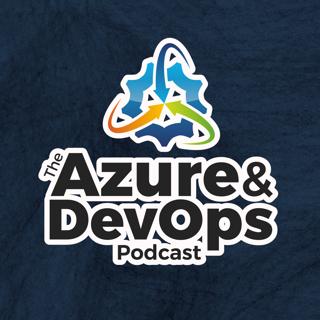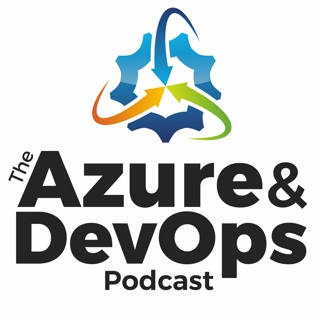
Simon Timms on Azure Functions and Processes - Episode 23
Simon Timms is a long-time freelance Software Engineer, multi-time Microsoft MVP co-host of ASP.NET Monsters on Channel 9, and also runs the Function Junction Youtube channel. He considers himself a generalist with a history of working in a diverse range of industries. He's personally interested in A.I., DevOps, and microservices; and skilled in Software as a Service (SaaS), .NET Framework, Continuous Integration, C#, and JavaScript. He's also written two books with Packt Publishing: Social Data Visualization with HTML5 and JavaScript and Mastering JavaScript Design Patterns. In this week's episode, Simon and Jeffrey will be discussing Azure Functions and running processes in Azure. Simon explains how the internal model of Azure Functions works, the difference between Azure Functions and Durable Functions, the benefits and barriers to Azure Functions, and much, much more. Topics of Discussion: [:43] About today's episode. [1:13] Simon's career in software engineering and the high-points in his journey. [3:11] Simon gives a rundown of the options available for running backend jobs when targeting the Azure datacenter. [4:23] How is Azure Functions different from Webjobs? [7:47] How would you make the decision to run your web application or website using Azure Web Apps or App Service Plan versus Azure Functions with the consumption model? [10:01] Simon dives deeper into how Azure Functions works. [12:23] A word from Azure DevOps Podcast's sponsor: Clear Measure. [12:48] Can you use Azure Functions for things that people traditionally had running as Azure Services or a scheduled task? [13:54] About Microsoft's new framework, Durable Functions. [15:33] Is Durable Functions ready? When should people be adopting it? [17:02] How Window queue-based services translate into Azure Functions. [18:29] How the internal model of Azure Functions works. [20:02] Azure Functions vs. Durable Functions. [21:44] How long-running business transactions look with Durable Functions. [24:30] What the testing environment and process looks like on Durable Functions. [26:26] Simon outlines some of the application types and scenarios you can do in Azure Functions. [28:28] Places where Azure Functions are not really good. [30:03] Are there any barriers to portability to going back-and-forth between hosting your job as a web job, versus hosting it as an Azure Function. [32:02] When would Simon go for Azure Batch instead of Azure Functions? [36:54] What Simon recommends listeners follow-up on! Mentioned in this Episode: Azure DevOps Clear Measure (Sponsor) Function Junction Youtube Channel Simon Timms (Blog) ASP.NET Monsters Social Data Visualization with HTML5 and JavaScript, by Simon Timms Mastering JavaScript Design Patterns, by Simons Timms Azure App Service Data Factory Azure Functions Azure Web Apps Troy Hunt Have I Been Pwned? Microsoft Durable Functions The official Twitter account for Azure Functions Eduardo Laureano's Twitter Jeff Hollan's Twitter Mikhail Shilkov's Twitter Want to Learn More? Visit AzureDevOps.Show for show notes and additional episodes.
11 Helmi 201938min

Paul Stovell on Octopus Deploy - Episode 22
Paul Stovell, the founder and CEO of Octopus Deploy, joins the podcast today. Paul is an expert on all things automated deployment and Cloud operations. He started Octopus Deploy back in 2011, but prior to that, he worked as a consultant for about five years. Octopus Deploy is a pretty major player in the market. Their mission? To do automated deployments really, really well. Today, it helps over 20,000 customers automate their deployments, and employs 40 brilliant people. It can be integrated with Azure DevOps services and many other build services. On this week's episode, Paul talks about his career journey and what led him to create Octopus Deploy; his accomplishments, goals, and visions for Octopus Deploy; which build servers integrate best with Octopus Deploy; his tips and tricks for how to best utilize it; and his vision for the future of DevOps. Topics of Discussion: [:51] About today's guest — Paul Stovell. [1:06] Paul introduces himself and gives some background on his career journey. [3:36] Paul's take on continuous integration in the past and now. [5:05] Paul's original vision for his company, Octopus Deploy. [7:54] Where Octopus Deploy fits in for Visual Studio developers. [12:03] Paul speaks about the two approaches to doing deployments. [16:11] About the depth of the Octopus Deploy library. [17:27] A word from the Azure DevOps Podcast sponsor: Clear Measure. [17:54] Out of all of the build servers, which integrate best with Octopus Deploy? [19:47] How Octopus Deploy could be a big game-changer with the newest release. [26:17] When adopting a serverless environment, where does Octopus Deploy's tentacle agent go? How does it configure? [29:23] Which tasks should go with Octopus Deploy and what're the boundaries? [31:11] Paul's vision for the future of DevOps 5-10 years down the road. [37:13] Jeffrey and Paul talk incident prevention and incident management. [39:16] Paul's recommendations on where to follow-up to learn more about Octopus Deploy after this podcast. Mentioned in this Episode: Azure DevOps Clear Measure (Sponsor) Paul Stovell Octopus DeployTeamCity Atlassian BambooRed Gate Octopus.com/blog (to join the Slack channel) Want to Learn More? Visit AzureDevOps.Show for show notes and additional episodes.
4 Helmi 201940min

Reviewing Current Azure DevOps News, Tips, and Strategies - Episode 21
This week, your host, Jeffrey Palermo, is bringing you a special solo episode to discuss current industry news in the DevOps space, as well as some of his latest tips and strategies. Jeffrey has been incredibly passionate about DevOps for a while now — since 2006 to be exact. Earlier in his career, he was a founding board member of a group called Agile Austin, led the Austin .NET User Group for about 5 years, and founded the Azure Austin Group. Since 2005, he has really had a passion for helping development teams be great — and the DevOps movement, in many ways, is a continuation of the passions of the Agile movement. It's a very unselfish movement — and that's why he loves it. He knew he wanted to contribute to the conversation after noticing the lack of outlets for DevOps conversations in the Microsoft community. So, in 2017, he started the Azure DevOps User Group on Meetup, then, in 2018, he launched this podcast, the Azure DevOps Podcast. In today's episode, Jeffrey reviews some of the current industry news and tips, including; an interesting announcement in the A.I. space about Cortana, ServiceNow Change Management in Azure Pipelines, Azure DevOps Agents on Azure Container Instances (ACI), .NET Core 3 and 4.8, and an article about Razor Components. He also gives his 10 tips for rapidly recovering when a deployment breaks badly. Topics of Discussion: [:52] About today's show, Jeffrey's background in the industry, and his passion for the DevOps movement. [2:50] Jeffrey reviews some current industry news and tips! [16:35] A word from Azure DevOps sponsor: Clear Measure. [17:02] An interesting strategy announcement in the A.I. space about Cortana. [20:39] Jeffrey highlights an article about Razor Components and gives his take on it. [29:11] About the fantastic kickoff presentation by Brian Harry on the Azure DevOps User Group. [30:17] 10 tips for rapidly recovering when a deployment breaks badly. [38:13] Announcing an upcoming Azure DevOps Podcast episode. Mentioned in this Episode: Azure DevOps Clear Measure (Sponsor) Azure DevOps User Group (on Meetup) Agile Austin Austin .NET User Group (on Meetup) Azure Austin Group (on Meetup) Azure DevOps Server 2019 RC2 Blog post by Matteo Emili on how to use the new URL scheme ServiceNow Change Management in Azure Pipelines Azure DevOps Agents on Azure Container Instances (ACI) .NET Core 3 Preview 1 NuGet Package Explorer Version 5 Satya Nadella on the strategy of Cortana Razor Components for a JavaScript-Free Frontend in 2019 Recording of the kickoff presentation by Brian Harry for the Azure DevOps User Group Paul Stovell Octopus Deploy Want to Learn More? Visit AzureDevOps.Show for show notes and additional episodes.
28 Tammi 201939min

Paul Hacker on DevOps Processes and Migrations - Episode 20
In this episode, Paul Hacker is joining the Azure DevOps Podcast to discuss DevOps processes and migrations. Paul is a DevOps Architect at Microsoft and has over 15 years of application, architecture, design, development, and management experience in Microsoft technologies. He has a depth of experience in ALM, Process Improvement, and Team Foundation Server. He's also a fully self-taught engineer in Microsoft technologies. When Team Foundation Server first came out, he jumped on the bandwagon and hasn't looked back since! Paul has some really interesting perspectives on today's topic and provides some valuable insights on patterns that are emerging in the space, steps to migrating to Azure DevOps, and common challenges (and how to overcome them). Tune in to gain his insight on migrations, DevOps processes, and more. Topics of Discussion: [:48] About today's guest and topic of discussion. [1:22] Paul introduces himself and shares his career journey. [2:55] Paul talks about a few of his Microsoft MVP awards. [3:37] Paul explains some of the general buzz words around DevOps. [6:09] Paul gives his definition of DevOps and explains some of the common challenges with customers in the DevOps space. [9:35] Are there some patterns that are beginning to emerge with continuous integration and continuous delivery pipelines? [12:02] What should people know about the basics of telemetry? [13:54] Paul gives some examples of what he would include to get started with Application Insights. [15:28] A word from Azure DevOps Podcast's sponsor: Clear Measure. [16:03] Paul's insights and views around those who are migrating to Azure DevOps. [18:18] The steps to migrating to Azure DevOps. [21:38] Some of the common things you should pay attention to when migrating to Azure DevOps. [23:36] What to be aware of when migrating to the Cloud. [28:06] Helpful work items, features, and tools for end users. [33:06] The importance of making work visible. [34:11] Resources Paul recommends listeners follow up on. Mentioned in this Episode: Azure DevOps Clear Measure (Sponsor) Paul Hacker (LinkedIn) Team Foundation Server (Visual Studio) Application Insights CICD Azure Boards Migrate from TFS to Azure DevOps SharePoint Want to Learn More? Visit AzureDevOps.Show for show notes and additional episodes.
21 Tammi 201937min

Greg Leonardo on Architecting, Developing, and Deploying the Azure Way - Episode 019
Today's guest is Greg Leonardo, a Cloud Architect at Campus Management Corp. and Webonology. Greg's main focus is to help organizations with Cloud adoption and innovation. He's been working in the IT industry since his time in the military (1993), and is a developer, teacher, speaker, and early adopter. He's worked in many facets of IT throughout his career and is the President of TampaDev — a community meetup that runs #TampaCC, Azure User Group, Azure Medics, and various technology events throughout Tampa. Recently, he's written his first book, Hands-On Cloud Solutions with Azure: Architecting, developing, and deploying the Azure way — which focuses on addressing the architectural decisions that usually arise when you design or migrate a solution to Microsoft Azure. It takes readers through getting started with Azure by understanding tenants, subs, and resource groups; helping them to decide whether to "lift and shift" or migrate apps; plan and architect solutions in Azure; build ARM templates for Azure resources; develop and deploy solutions in Azure; understand how to monitor and support your application with Azure; and more. In today's episode, Greg and Jeffrey discuss the components of Greg's new book and dive deep into topics such as; architecture, app service environments, web apps, web jobs, Windows Containers, and more. Topics of Discussion: [:52] About today's guest and topic of discussion. [1:25] Jeffrey welcomes Greg to the podcast. [1:42] Greg gives a background of his career and how he originally got into software and the IT industry. [3:22] About Greg's brand new book, Hands-On Cloud Solution with Azure. [4:49] How Greg decided what topics to cover in his book about Azure. [7:23] Where to find Greg's book. [7:36] Greg talks about some of the highlights of his book, starting with how to think about architecture. [10:32] What is an app service environment (ASE)? [10:58] Greg gives a rundown of what listeners need to be thinking about in terms of the building blocks for web apps, web jobs, app service plans, etc. [14:21] Greg explains the architectural elements of a web application. [16:28] When should someone really spend some time learning Windows Containers? [21:29] A word from Azure DevOps Podcast's sponsor: Clear Measure. [21:58] Greg explains the architectural options in Azure for an offline job. [25:50] Greg's take on web jobs. [26:49] What is it that makes functions a higher price point than web jobs? [31:05] How to put an SQL server into Azure. [34:35] What a noisy neighbor is in Azure. [37:15] What Greg recommends listeners follow up on after this episode! Mentioned in this Episode: Azure DevOps Greg Leonardo (LinkedIn) GregLeonardo.com Campus Management Corp. Webonology TampaDev Microsoft Ignite Conference Vets inTech Hands-On Cloud Solutions with Azure: Architecting, developing, and deploying the Azure way, by Greg Leonardo App Service Environment (ASE) VM Backup Windows Containers .NET Core Clear Measure (Sponsor) SQL Server Want to Learn More? Visit AzureDevOps.Show for show notes and additional episodes.
14 Tammi 201938min

Aaron Palermo on Cybersecurity and SDP - Episode 018
Today's episode is a bit of a special one — your host, Jeffrey Palermo, interviews his own older brother, Aaron Palermo. Aaron is a DevOps engineer, solution architect, and all-around cybersecurity expert. He works for a global cybersecurity services company, is a member of the Cloud Security Alliance, and is a co-author of the up-and-coming Software Defined Perimeter Specification Version 2. SDP is a full replacement for VPN — providing better protection to fully secure your data, devices, and accounts. This episode is jam-packed with incredibly useful information applicable to software developers — but also anybody who has a Wi-Fi network. Stay tuned to hear about how an SDP replaces a VPN, Aaron's recommendations on how people can fully protect themselves online, which state-of-the-art multi-factor authentication people should be using, how to keep your data safe and protect from Wi-Fi vulnerabilities, and more. Topics of Discussion: [:52] About today's topic and guest. [1:24] About the Palermo family and Aaron's background in the industry. [5:23] Aaron explains what an SDP is. [7:18] How an SDP affects a person's setup. [13:22] Does an SDP complement a VPN or does it replace a VPN? [13:40] Does an SDP create a network to a data center or can parts of the network exist anywhere? [14:23] What are the products available now to use an SDP? [16:00] Some differences between an SDP and a VPN. [17:00] A message from The Azure DevOps Podcast's sponsor: Clear Measure. [17:28] Aaron's thoughts on whether or not companies not using SDP would be considered malpractice in the future. [19:26] Why SDP serves a good solution. [21:05] Would an SDP be an absolute recommendation to people working from home when accessing anything that's not 'software as a service?' [22:49] For smaller organizations, what are Aaron's SDP recommendations that are easy to get started with? [24:32] What are some things that people should be doing to protect themselves and their accounts online? [26:55] On the corporate side, Aaron gives his suggestions on what people should be doing with their 'software as a service' accounts. [28:05] The state-of-the-art multi-factor authentication people should be using. [29:22] Aaron gives a rundown of YubiKey and how it's used. [31:35] The brands Aaron and his customers use (multi-factor authentication-wise.) [32:05] Aaron speaks about general Wi-Fi vulnerabilities. [35:08] Aaron explains the premises of his two recent presentations: "Tell My Wi-Fi Love Her," and "Wi-Fi Trolling." [39:27] Aaron's best recommendations for keeping your data safe. [41:26] Aaron's recommendations for backup services. [43:00] Aaron's recommendations for backup services on the business or corporate level. [45:52] Aaron's take on single sign-on providers and his recommendations to balance ease of development. [50:30] Aaron and Jeffrey wrap up this week's episode. Mentioned in this Episode: SDP Specification v1.0 Cloud Security Alliance Azure DevOps Cyxtera Zscaler Duo Security Clear Measure (Sponsor) YubiKey KeePass LastPass 1Password BitLocker for Windows FileVault on Mac CrashPlan BackBlaze Want to Learn More? Visit AzureDevOps.Show for show notes and additional episodes.
7 Tammi 201952min

Gopinath Chigakkagari on Key Optimizations for Azure Pipelines - Episode 017
In today's episode, your host, Jeffrey Palermo, is joined by his guest, Gopinath Chigakkagari. Gopinath is Principal Group Program Manager on the Azure Pipelines product and is an expert on continuous delivery. He's been with Microsoft for over 20 years, serving a variety of roles at the company — starting out as a developer, then becoming a program manager, and then transitioning to his current role as GPM for Pipelines. Today, Gopinath hits on some fascinating points and topics about Azure Pipelines, including (but not limited to): what listeners should be looking forward to, some highlights of the new optimizations on the platform, key Azure-specific offerings, as well as his recommendations on what listeners should follow up on for more information! Topics of Discussion: [1:03] About today's guest, Gopinath Chigakkagari. [1:43] Gopinath's speaks about his roles at Microsoft over the years. [3:11] Is there a particular part of Azure Pipelines Gopinath focuses on more than the rest? [4:02] Gopinath explains the similarities and differences of continuous integration and continuous delivery. [6:38] Gopinath reveals what listeners should be looking forward to with Azure Pipelines. [9:52] Fastforwarding in the future with the GitHub acquisition in mind, does Gopinath see GitHub becoming the default way to store source control? [11:15] A word from Azure DevOps Podcast's sponsor: Clear Measure. [11:46] Gopinath highlights some of the new optimizations in the Azure platform. [14:09] How many Clouds are there? [15:41] Gopinath explains some of the key optimizations for Azure specifically. [17:23] Are there any application types that still have some gaps in Azure Pipelines or are they now all supported? [20:20] Gopinath goes over several more key Azure-specific offerings. [23:23] What parts are ready to move to Containers right now and have good support in Azure? [25:02] Is there a firm, recommended way to do automated database schema migrations at this point in time? Or are there multiple options being designed? [27:39] Gopinath's recommendations on what listeners should follow up on for more information and some more key points about Azure. Mentioned in this Episode: Azure DevOps .NET Build Conference Azure Pipelines Azure Repos Azure Boards Azure Artifacts Connect Conference GitHub GitHub Acquisition ServiceNow VSCode YAML Clear Measure (Sponsor) AWS Azure Stack Windows Containers ReadyRoll Azure SQL Paas Jenkins Want to Learn More? Visit AzureDevOps.Show for show notes and additional episodes. Follow Up with Our Guest: Gopinath Chigakkagari's LinkedIn Gopinath's Chigakkagari's Twitter
31 Joulu 201830min

Roopesh Nair on the Release Capabilities of Azure Pipelines - Episode 016
Today's episode of the Azure DevOps Podcast is featuring Roopesh Nair, a Principal Lead Program Manager at Microsoft. He has over 20 years of experience in custom software. And at Microsoft, he works on the release capabilities in Azure Pipelines. Roopesh is incredibly passionate about DevOps and enjoys working with customers. In this episode, Roopesh gives an overview of the capabilities within Azure DevOps in terms of deploying software, gives his recommendations on how to quickly get started with Azure DevOps and the best package to start out with, and offers guidance on how to package applications so they work well with the release capabilities. He also gives a bit of a sneak preview into some of the work he and his team are currently working on around deployment and experimentation services! Topics of Discussion: [:42] About today's episode with Roopesh Nair. [1:39] Roopesh talks about his personal journey and how he found himself at Microsoft. [3:07] The most interesting change Roopesh has observed since coming to Microsoft. [5:13] Roopesh talks about the transition from WPF to web-based. [7:02] Roopesh gives an overview of the capabilities within Azure DevOps in terms of deploying software. [13:35] Roopesh's recommendation for how to get started quickly with Azure DevOps. [14:47] A word from Azure DevOps Podcast's sponsor: Clear Measure. [15:15] Roopesh gives his recommendations for the best package to start with and offers his guidance for how to package applications (so they work well with the release capabilities). [17:22] Are any of the services or groups deploying anything using Windows Containers? [18:15] Roopesh's guidance for listeners getting started (literally this month!). [18:53] Features Roopesh's team is working on in terms of experimentation services. [21:41] What they're planning on in other spaces for deployment. [24:47] Are there any release hub examples listeners can look at as a reference? [26:21] When does Roopesh think that the YAML configuration will be ready? [26:52] How Roopesh sees deploying software will be like in the future. [28:08] Are there capabilities in the release hub that are aimed at database integration? [32:00] The tool Roopesh's team uses internally to execute their directory of files. [34:06] What Roopesh recommends listeners follow up on to learn more. Mentioned in this Episode: Azure DevOps Azure Pipelines Buck Hodges on the introduction to Azure DevOps Services - Episode 001 WPF Azure DevOps Projects Clear Measure (Sponsor) Service Fabric Windows Containers Azure Container Registry SQL Server Azure Cosmos DB Azure Blob Storage SQL Roundhouse Alias ReadyRoll (SQL Change Automation) 34:24 resource mentioned here Want to Learn More? Visit AzureDevOps.Show for show notes and additional episodes. Follow Up with Our Guest: Roopesh Nair's LinkedIn Roopesh Nair's Twitter
24 Joulu 201835min






















